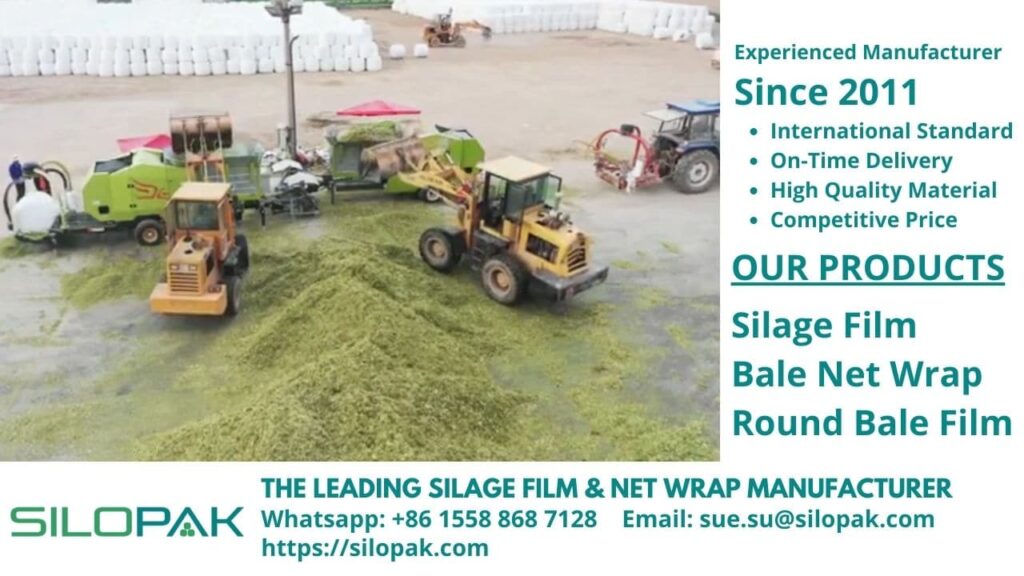
Corn ensilage is a fermentative process of turning harvested corn into silage. The process takes time before the materials are of their optimal quality before being given to the animals. Corn silage requires a method to decrease the oxygen levels and increase acidity quickly, leaving lactic acid bacteria to preserve the resulting silage.
Some farmers tend to argue that the whole fermentation process completes within three weeks, after which it’s good for feeding the animals. While the fermentation process does complete in three weeks, maximum levels of pH reduction, soluble protein, and lactic acid will only be achieved in four months after storing.
The most important aspect of ensiling is proper sealing. Only after the corn materials are sealed well will the fermentation process kick in.
contents
Stages of Corn Ensilage
Below are the stages of the corn ensilage process:
Aerobic Phase
The aerobic stage takes place two days after ensiling. Proper packing and sealing are required to eliminate as much oxygen as possible. The levels of remaining oxygen are determined by the moisture of the content, the time to fill a silo, the packing of the silo, and the length of the silage chop. The cells in the plant materials will use up the remaining oxygen, producing carbon dioxide.
Water and heat are produced by aerobic bacteria that further use up the remaining oxygen by plant sugars. Silos that are packed and sealed poorly will have a longer aerobic phase compared to ones properly treated. A longer aerobic phase reduces the quality of the final product as it leads to high temperatures and a high loss of dry matter. This also leads to increased growth of mold and production of mycotoxin. The pH begins to fall from 6.5 to 6 at this stage.
Lag Phase
The lag phase is that gap after the previous phase. Plant cells break down following all remaining oxygen being used up. Broken-down cells are then used by bacteria as a food source. Complex components such as fiber, starch, and carbohydrates are converted into simple sugars by plant enzymes.
These sugars will be fed upon by bacteria. Soluble protein is also present due to enzymes breaking down plant protein. The cell juices produced during this phase will be used by bacteria to grow. Acidity rises as pH drops to 5.5.
Anaerobic Fermentation Phase
The anaerobic fermentation phase occurs 2-3 days after the ensilage process begins. Oxygen has been completed eliminated, and acidity levels accommodate lactic acid bacteria’s growth. Acidity levels further increase as the bacteria grow, producing lactic and acetic acids.
Two lactic acid bacteria types exist:
- Homofermentative bacteria produce lactic acid, and
- Heterofermentative bacteria produce both lactic and acetic acids as well as ethanol and carbon dioxide.
-
Homofermentative bacteria are preferable due to their quick action in preserving nutrients. A good ensilage process should result in silage with lactic acid of 70% of the total amount of acid. The anaerobic phase should last for at least two weeks, at which time the silage’s temperature drops close to the surroundings’.
Stable Phase
Silage is considered stable after 21 days in storage. At this stage, pH would be up to 4.2. The silage would be less palatable with fewer nutrients at this stage. But improvement will be observable after 4 to 6 months.
Entrusting Your Needs to the Trustworthy
Corn ensilage possesses varied starch digestibility depending on the year and location of production. Factors that affect the digestibility rate include growing conditions, hybrid selection, storage time, kernel processing, and corn maturity when being harvested.
Corn ensilage makes the starch digestibility rate increase after the first few months. The digestibility continues to improve as the silage keeps in storage over time. This is due to continued bacterial actions within the content, which further break down available protein into soluble protein.
If you’re wondering how you can begin the corn ensilage process, you can start by talking to us at Silopak to discuss what is needed to support the project. We provide the best wrapper for farmers to use to make corn silage. Our products help improve the sealing of corn materials inside to ensure a proper fermentation process for the best results of livestock feed. Drop some questions, and our helpful representatives will follow them up with the information you need.
